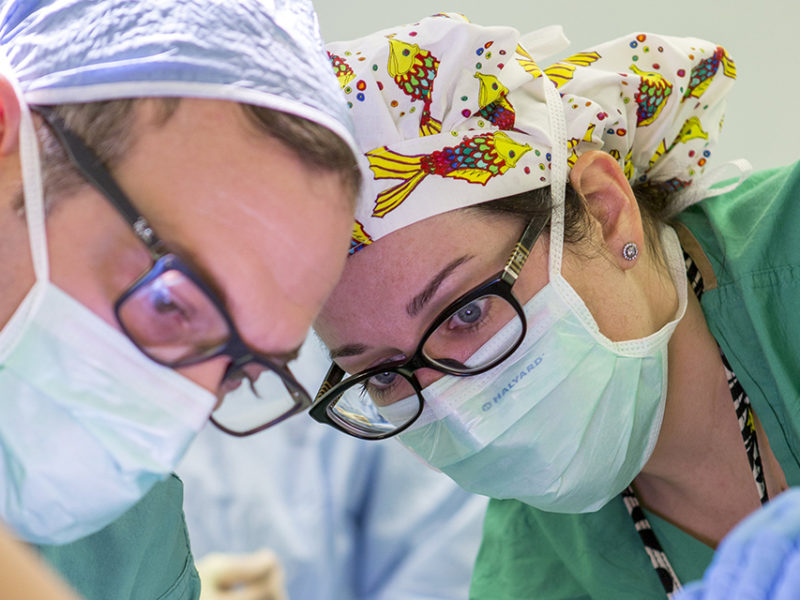When Is It Appropriate to Send Pediatric Patients to an OB/GYN?
When Is It Appropriate to Send Pediatric Patients to an OB/GYN? https://pediatricsnationwide.org/wp-content/themes/corpus/images/empty/thumbnail.jpg 150 150 Geri Hewitt, MD Geri Hewitt, MD https://pediatricsnationwide.org/wp-content/uploads/2021/03/031717ds0030-hewitt-profile-1.gif- October 29, 2019
- Geri Hewitt, MD
This post was reviewed by Dr. Hewitt and updated on June 4, 2021.
The American College of Obstetrics and Gynecology (ACOG) recommends that young women have their first visit with an obstetrician-gynecologist (OB/GYN) between the ages of 13 and 15. Making sure that first appointment is with a pediatric gynecologist can have added benefits. Specific symptoms (vaginal bleeding or discharge, abnormal appearance of genitalia) or abnormalities (congenital anomalies, chronic disease impacting reproductive health, or ovarian masses) may necessitate earlier referral.
These visits provide an opportunity for anticipatory guidance regarding reproductive health care (including an age-appropriate discussion of anatomic development, body image, self-confidence, weight management, immunizations (particularly the HPV vaccine), contraception and sexually transmitted infections). This visit is also an opportunity for the doctor to establish a relationship with the patient and parent or guardian, discuss normal and abnormal pubertal development, dispel myths and misconceptions surrounding weight, development and sexuality and help adolescent girls become comfortable with their changing bodies.
A physical exam to point out normal development and identify areas of concern is often performed to the patient’s comfort level. Although this will include a visual examination of the breast and genitalia an internal examination is not typically performed and the child and parent may decline an external visual examination if she feels uncomfortable. Invasive testing of the reproductive organs is also not recommended in this age group. Screening for sexual transmitted diseases can be done through urine testing. Regardless of whether they have received the HPV or Gardasil vaccine, patients begin cervical cancer screening with pap smears between ages 21-25 years. Contraception and/or hormonal therapy can be initiated without a pelvic examination.
Pediatric and adolescent gynecologists undergo additional specialized training after residency to learn to care for medical and surgical gynecologic problems in girls and adolescents such as:
- Ovarian masses
- Congenital problems of the reproductive system
- Abnormal uterine bleeding
- Menstrual and pelvic pain
- Contraceptive issues in medically complex patients
- Gynecologic problems in pre-school age children
Although adult gynecologists treat many of these conditions in older women, differences in the anatomy of children make the advanced training of a pediatric and adolescent gynecologist valuable in the care of girls and adolescents.
About the author
Geri D. Hewitt, MD, is chief of the Section of Obstetrics and Gynecology at Nationwide Children’s Hospital and a professor of Clinical Obstetrics in the Departments of Obstetrics and Gynecology and Pediatrics at The Ohio State University College of Medicine. Dr. Hewitt's primary interests are caring for the gynecologic and reproductive health needs for young girls as well as adolescents. Dr. Hewitt is an examiner for the American Board of Obstetrics and Gynecology. Dr. Hewitt is a Fellow of the American College of Obstetricians and Gynecologists and a co-editor for the Journal of Pediatric and Adolescent Gynecology Tips for Clinicians section.
-
Geri Hewitt, MDhttps://pediatricsnationwide.org/author/geri-hewitt-md/
-
Geri Hewitt, MDhttps://pediatricsnationwide.org/author/geri-hewitt-md/September 28, 2021
- Post Tags:
- Pediatric and Adolescent Gynecology
- Posted In:
- Features
- Second Opinions








